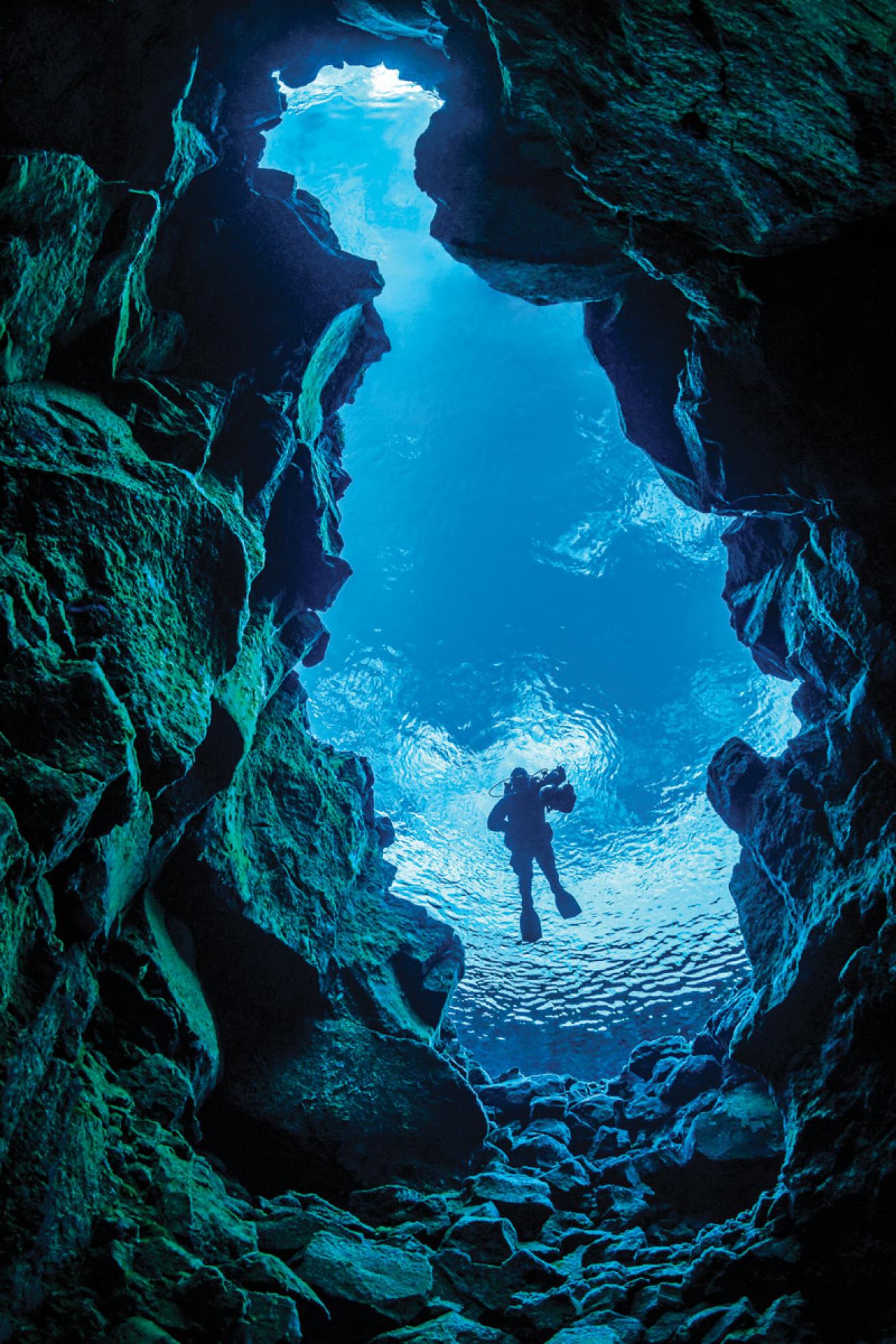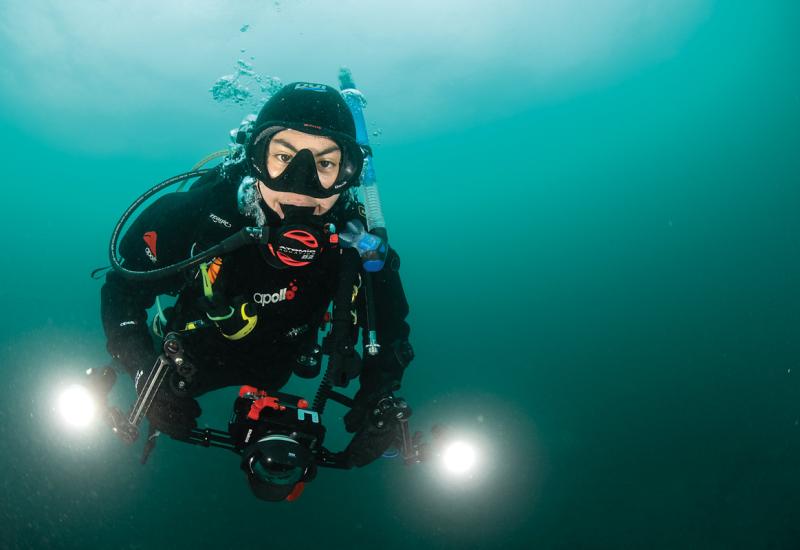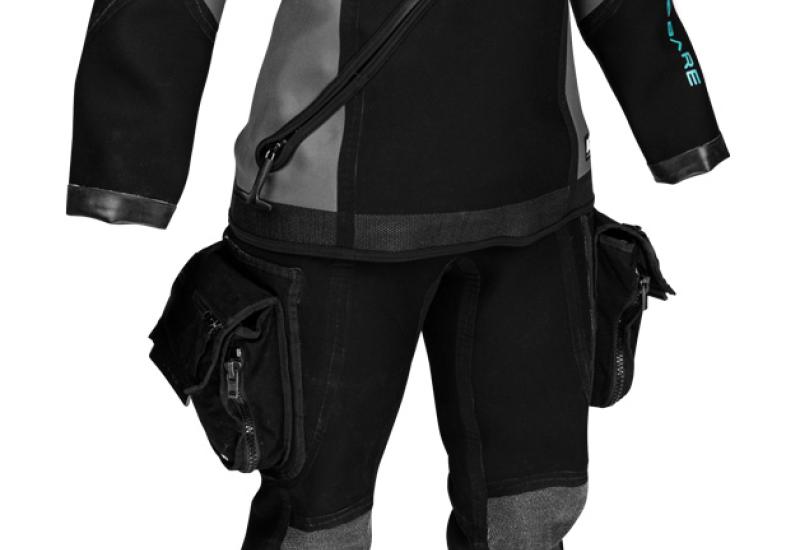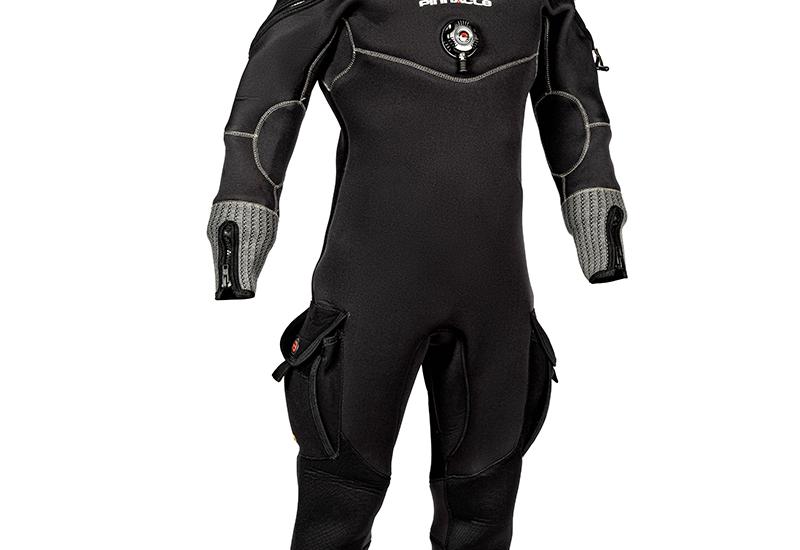Why You Should Try Drysuit Diving

Tobias FriedrichA diver outfitted in a drysuit explores Iceland’s Silfra Crack.
A diver listening to me share some of my under-ice experiences in Antarctica commented that they would never do what I did. I started to explain the training and overhead environment safety protocols we followed, but they cut me off: “It’s not the ice,” the diver said. “It’s the cold. Diving in cold water is no fun. I don’t dive in cold water.”
Let’s clear up a too common misconception: It’s not diving in cold water that’s no fun—it’s getting cold while diving that’s no fun. And with today’s drysuits and undergarments, there’s no reason for that to happen. You can comfortably make two or three no-stop recreational dives a day in surprisingly cool water in regular drysuits. And, if you want to go more extreme (tec diving, under ice, etc.), now you can add heating systems for longer dives or the coldest water.
In case you’ve never tried it, diving dry has several advantages. The most obvious is that it opens the door to some beautiful underwater environments that you might otherwise miss. But sometimes drysuits have the upper hand even for otherwise “wetsuitable” situations. For one, you can dive longer or make more dives comfortably. For deeper dives, drysuits insulate just as well as you go deeper, but wetsuits compress and lose insulation.
When it’s cold out, drysuits keep you warmer at the surface before the dive, and unlike soaked wetsuits, most types are warm even after the dive. By insulating you better before, during and after the dive, in many regions drysuits extend your dive season—if not year-round, you splash earlier in the spring and don’t stop until later in the fall or early winter.
Related Reading: How to Make the Most of Your Drysuit
Drysuits add an airspace around your body, so they do require some special training. Because what you learn is not always intuitive (buoyancy control techniques, proper weighting, essential related gear, inflation and deflation, maintenance, etc.) this is important for your safety. For context, in cold-water regions around the planet, many PADI Open Water Diver students learn and are trained to use drysuits from Day 1.
Related Reading: Drysuit Diving Myths, Busted
Check out theDive Like a Pro article on drysuits, and see your PADI shop about getting into one. They can help you choose a drysuit and accessories, and get you going in the PADI Dry Suit Diver course. As we head into the cool months, now would be a good time to start getting set for a longer dive season!










